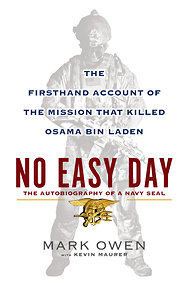“She warned me that she was on a watchlist, and that she would be pulled out of the line,” he said Tuesday in an interview. “And sure enough, she was.”
Last week, Ms. Poitras, 49, emerged as the pivotal connection between the former government contractor Edward J. Snowden and writers for The Guardian and The Washington Post who published his leaked documents about government surveillance. But she has a much longer history as a filmmaker trying to show on screen how the world has changed since the Sept. 11 attacks.
Her first two films in that project — “My Country, My Country,” set in Iraq after the American invasion, and “The Oath,” about a former Guantánamo Bay prisoner and his brother-in-law, who once worked as Osama bin Laden’s bodyguard — garnered critical praise and apparently the attention of the United States government.
In an interview Wednesday from a hotel in Hong Kong, she described herself as unexpected player in the Snowden leak. “This is not something I was seeking out,” she said.
Mr. Snowden first reached out to her in January, she said, telling her that he had read about her regular border detention and saw it as “an indicator that I was a person who was ‘selected,’ ” that is, someone who would be familiar with what it is to be watched by the government. “He knew it was a subject that would resonate with me.” (He had also seen a short film about domestic surveillance, “The Program,” she made for The New York Times.)
Ms. Poitras, who won a MacArthur “genius” grant in 2012 and was nominated for an Oscar for “My Country,” was already living and working outside the country. After six years of being detained at the border — “upwards of 40 times, probably more, I lost count” — and having her laptop seized, her notes copied, she relocated to Europe.
“It was good timing in that way,” she said Wednesday.
But in addition to her tense relations with her government, there was another, more practical reason Mr. Snowden connected with her, she said. She was able to begin an untraceable discussion with him — as he insisted — because she was familiar with encryption technology.
“The number of journalists who know how to use it is very small,” she said. “You wouldn’t have been able to communicate with Snowden without encryption.” Ms. Poitras said that because of her experience reporting on national security matters, she had a public encryption key that allows someone to begin a confidential discussion online. That key, she said, “wasn’t easy to find, but it wasn’t hard to find someone to ask me to provide it.”
And Mr. Snowden did, she said.
Still, the way Mr. Snowden’s leaked document about Prism — the National Security Agency program that collects data from online providers of e-mail and chat services — was published is hardly typical. Both The Guardian and The Post wrote about a top-secret slide presentation on Prism at roughly the same time; for the Post article, Ms. Poitras shared a byline with Barton Gellman, whom she knew from their time together on a fellowship at New York University and contacted in February.
Later, for a profile on Mr. Snowden in The Guardian, Ms. Poitras shared a byline with Glenn Greenwald, a civil liberties writer she knew from the board of the Freedom of the Press Foundation, and Ewen MacAskill, a Guardian reporter.
In the interview, Ms. Poitras declined to elaborate on how the two stories came about. According to the Guardian’s account of how the news broke, Mr. Snowden tried during the winter to contact Mr. Greenwald directly, then Ms. Poitras interceded with Mr. Greenwald and “convinced him that he needed to take this more seriously.”
She also shot the 12-minute video in which Mr. Snowden explains his motivation for leaking. It has been viewed 2.5 million times, according to The Guardian, since it was posted over the weekend on the newspaper’s Web site.
Ms. Poitras also sought to deflect attention from herself and her role. “I have received a zillion e-mails,” she said.
“We are in the middle of an unfolding story, we don’t know where it is going, there are real stakes, real dangers, and my bio is just not that important,” she said, citing the recent government investigations of journalists at The Associated Press and Fox News.
But, as should not be surprising for a struggling documentary filmmaker who has had to generate interest in her films, she has given plenty of interviews about her life.
Born in Boston, Ms. Poitras told the Web site Still in Motion that she started out as a chef. “I did French food for about 10 years, working at very, very fancy places in San Francisco,” she said. She learned film in the avant-garde tradition at the San Francisco Art Institute and later came to New York to study at the New School.
While her work today is much more realistic, she told Still in Motion what she has retained from her avant-garde teachers: “You were the artist and you made your own film — as the cinematographer, the director, the producer, the way you cut it, etc., but, totally noncommercial.”
Cara Mertes, the director of the documentary film program at Sundance, where “The Oath” had its premiere in 2010, cited a number of documentaries, including the recent “The Invisible War,” about sexual assault in the United States military, that are driving public interest and ultimately the news coverage.
Speaking of Ms. Poitras, she said, “In a lot of ways, the news has caught up with the story she is trying to tell.”
Ms. Poitras now finds herself amid the hustle and bustle of a global breaking news event, but still has her camera out and a personal vision of the story she wants to tell — and, she says, it will be very different than the way a newspaper would tell it.
The Snowden interview will be part of her next work, “a film, which is not coming out tomorrow, or next week,” she said. “It is going to take awhile.”

Article source: http://www.nytimes.com/2013/06/15/business/media/filmmaker-linked-to-leaks-has-her-own-stories-to-tell.html?partner=rss&emc=rss

